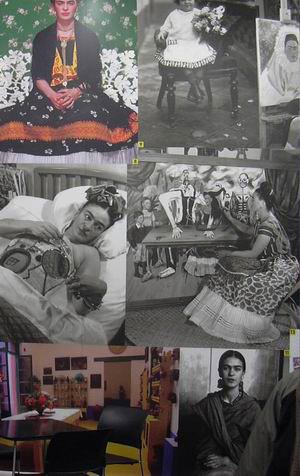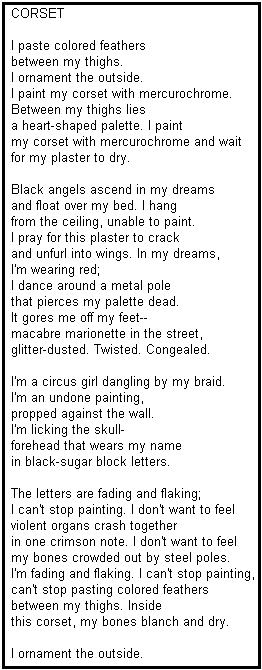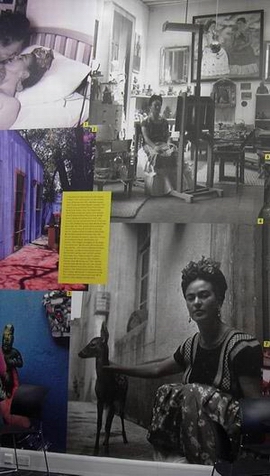Some say Frida Kahlo's life overshadows her art. But having seen her paintings in the plaster-hard flesh, close-up, the brush strokes, the vibrant colours and lines black and bold as a whore's make-up, I have to say I disagree. How can a series of work so personal that it might be made of the blood and tears themselves, sweat, marrow, chipped teeth and clipped bone, be over-shadowed by the life that bore it?
I knew Frida's story before I made the trip to the Tate for the exhibition. I knew of her crippled history - the bus accident that broke her spine, collar bone, pelvis and leg, the endless operations, the pain, the beginning of a life-long series of portraits to relieve the boredom as she recovered. The loss of her baby, the loss of her love, the loss of a leg, the depression and the endless pain. But not all of her paintings were of a doomed quality and some were actually quite cheerful - the way a brightly coloured St Sebastian portrait might be cheerful. Blazing peacock colours hiding the agony beneath. Some paintings show her mixed identity - as a woman of the mestizo race, and of America where she lived for much of her life whilst craving Mexican soil. Her roots like plants into the ground in many paintings. Her love for the great painter and political activist Diego Rivera, his infidelities, the dissolution of their marriage and their second wedding.
The exhibition was smaller than I had expected, and perhaps there was a struggle to fill the space, with inclusion in the collection of scraps and doodles and other ditherings that I expect Kahlo never intended the public to see. Still, there were other paintings, small mixtures of colour on metal, that I had not seen before, and which I loved. Kahlo's interpretation of the ex-votos of Mexican tradition. The intimate curl of the flower petals in a pearl-white sheen over metal, the newly-hatched chick laced with hazardous spiderweb. All decorously revealing the opposite of light and freedom in their darker edges.
Frida Kahlo's work is about cycles of life, death, light, dark, feminine, masculine, contrasts and dualities. Victim, survivor, wife, painter, lover and creator, she will always be an inspiration to many.



